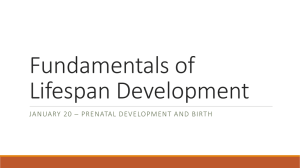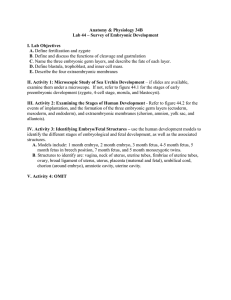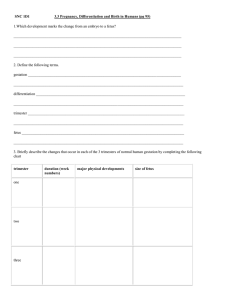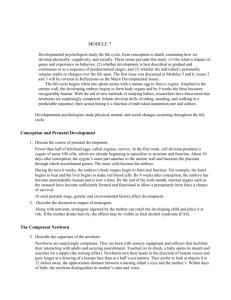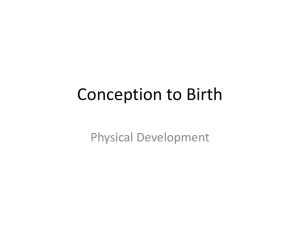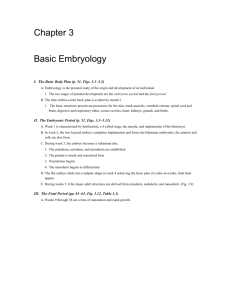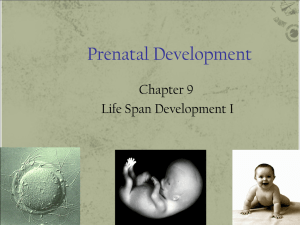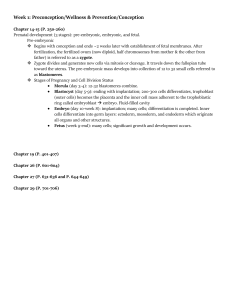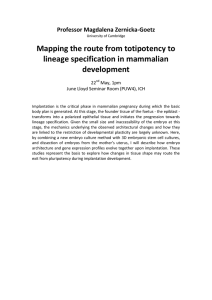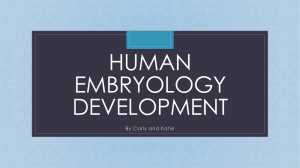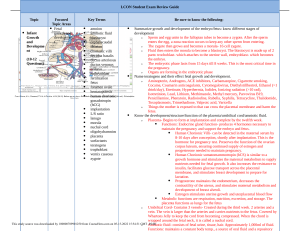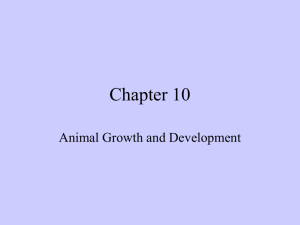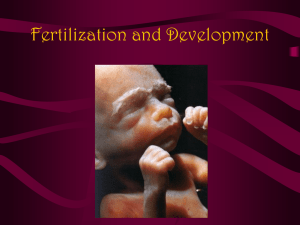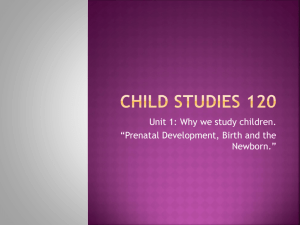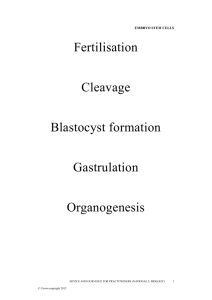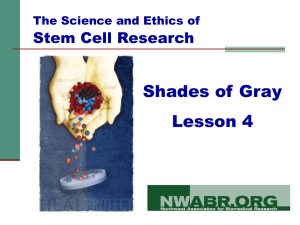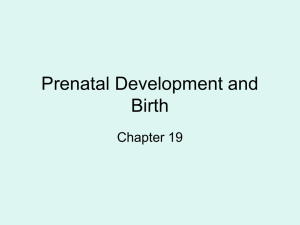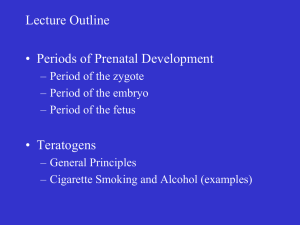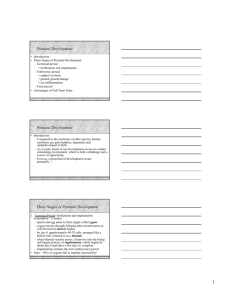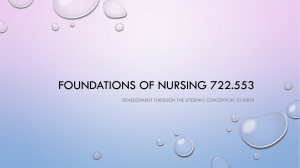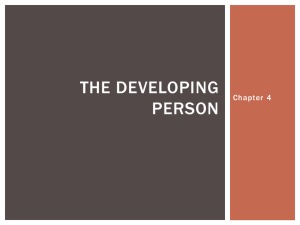Pre Natal Development
advertisement
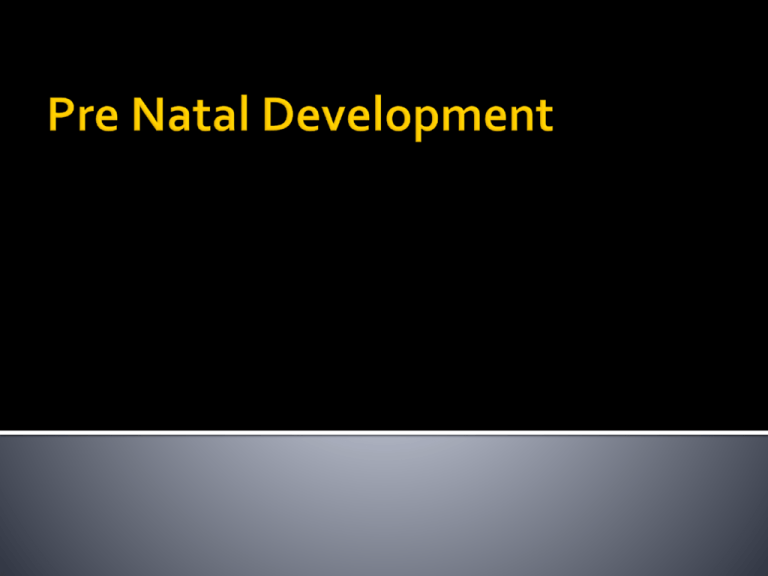
The process of growth and development within the womb, in which a single-cell zygote (the cell formed by the combination of a sperm and an egg) becomes an embryo, a fetus, and then a baby. Germinal Stage Embryonic Stage Fetal Stage This stage begins with conception, when the sperm and egg cell unite in one of the two fallopian tubes. The fertilized egg, known as a zygote, then moves toward the uterus, a journey that can take up to a week to complete. Cell division begins approximately 24 to 36 hours after conception. Within just a few hours after conception, the singe-celled zygote begins making a journey down the fallopian tube to the uterus where it will begin the process of cell division and growth. The zygote first divides into two cells, then into four, eight, sixteen, and so on. Once the eight cell point has been reached, the cells begin to differentiate and take on certain characteristics that will determine the type of cells they will eventually become. As the cells multiply, they will also separate into two distinctive masses: the outer cells will eventually become the placenta while the inner cells will form the embryo. Cell division continues at a rapid rate and the cells then develop into what is known as a blastocyst. The blastocyst is made up of three laters: The ectoderm (which will become the skin and nervous system) The endoderm (which will become the digestive and respiratory systems) The mesoderm (which will become the muscle and skeletal systems). Finally, the blastocyst arrives at the uterus and attached to the uterine wall, a process known as implantation. Implantation occurs when the cells nestle into the uterine lining and rupture tiny blood vessels. The connective web of blood vessels and membranes that forms between them will provide nourishment for the developing being for the next nine months. Implantation is not always an automatic and sure-fire process When implantation is successful, hormonal changes halt a woman’s normal menstrual cycle and cause a whole host of physical changes. For some women, activities they previously enjoyed such as smoking and drinking alcohol or coffee may become less palatable, possibly part of nature’s way of protecting the growing life inside her. The mass of cells is now know as and embryo. The beginning of the third week after conception marks the start of the embryonic period, a time when the mass of cells becomes a distinct human being. The embryo begins to divide into three layers each of which will become an important body system. Approximately 22 days after conception, the neural tube forms. This tube will later develop into the central nervous system including the spinal cord and brain. Around the fourth week, the head begins to form quickly followed by the eyes, nose, ears, and mouth. The cardiovascular system is where the earliest activity begins as the blood vessel that will become the heart start to pulse. During the fifth week, buds that will form the arms and legs appear. By the time the eight week of development has been reached, the embryo has all of the basic organs and parts except those of the sex organs. It even has knees and elbows! At this point, the embryo weight just one gram and is about one inch in length. Once cell differentiation is mostly complete, the embryo enters the next stage and becomes known as a fetus. This period of develop begins during the ninth week and lasts until birth. The early body systems and structures established in the embryonic stage continue to develop. The neural tube develops into the brain and spinal cord and neurons form. Sex organs begin to appear during the third month of gestation. The fetus continues to grow in both weight and length, although the majority of the physical growth occurs in the later stages of pregnancy. This stage of prenatal development lasts the longest and is marked by amazing change and growth. During the third month of gestation, the sex organs begin to differentiate and by the end of the month all parts of the body will be formed. At this point, the fetus weight around three ounces. The end of the third month also marks the end of the first trimester of pregnancy. During the second trimester, or months four through six, the heartbeat grows stronger and other body systems become further developed. Fingernails, hair, eyelashes and toenails form. Perhaps most noticeably, the fetus increases quite dramatically in size, increasing about six times in size. The brain and central nervous system also become responsive during the second trimester. Around 28 weeks, the brain starts to mature much faster with activity that greatly resembles that of a sleeping newborn. During period from seven months until birth, the fetus continues to develop, put on weight, and prepare for life outside the womb. The lungs begin to expand and contract, preparing the muscles for breathing.
